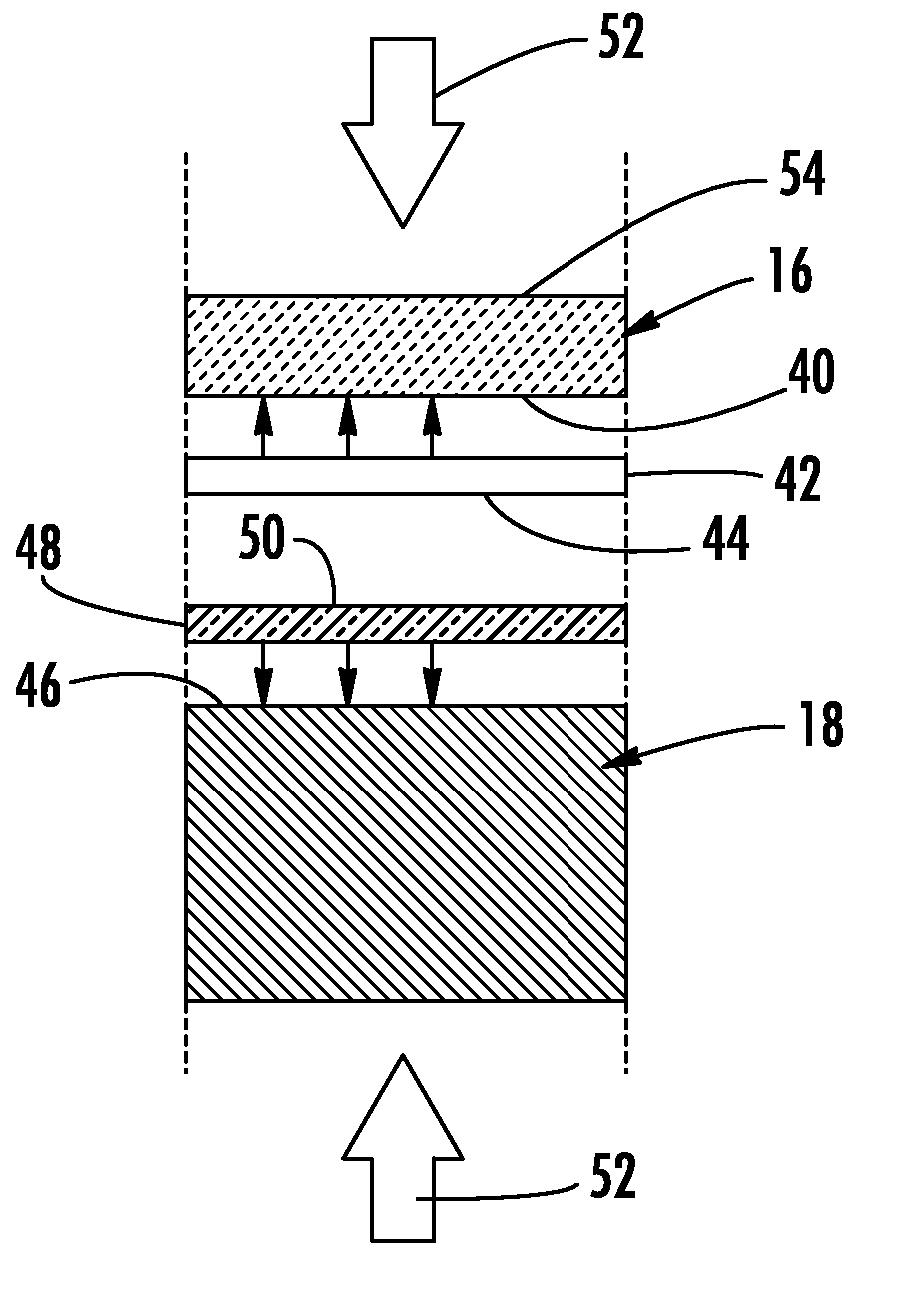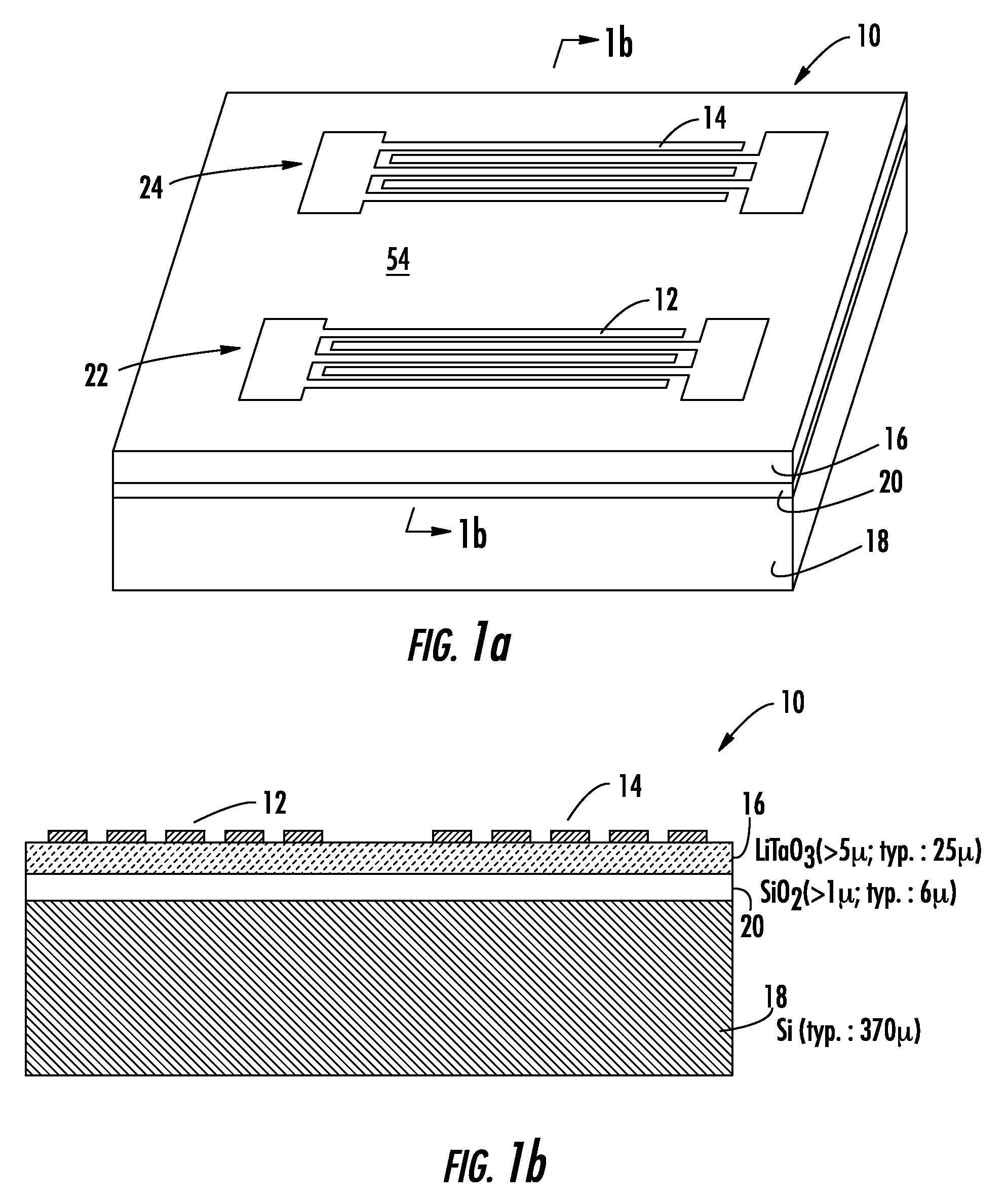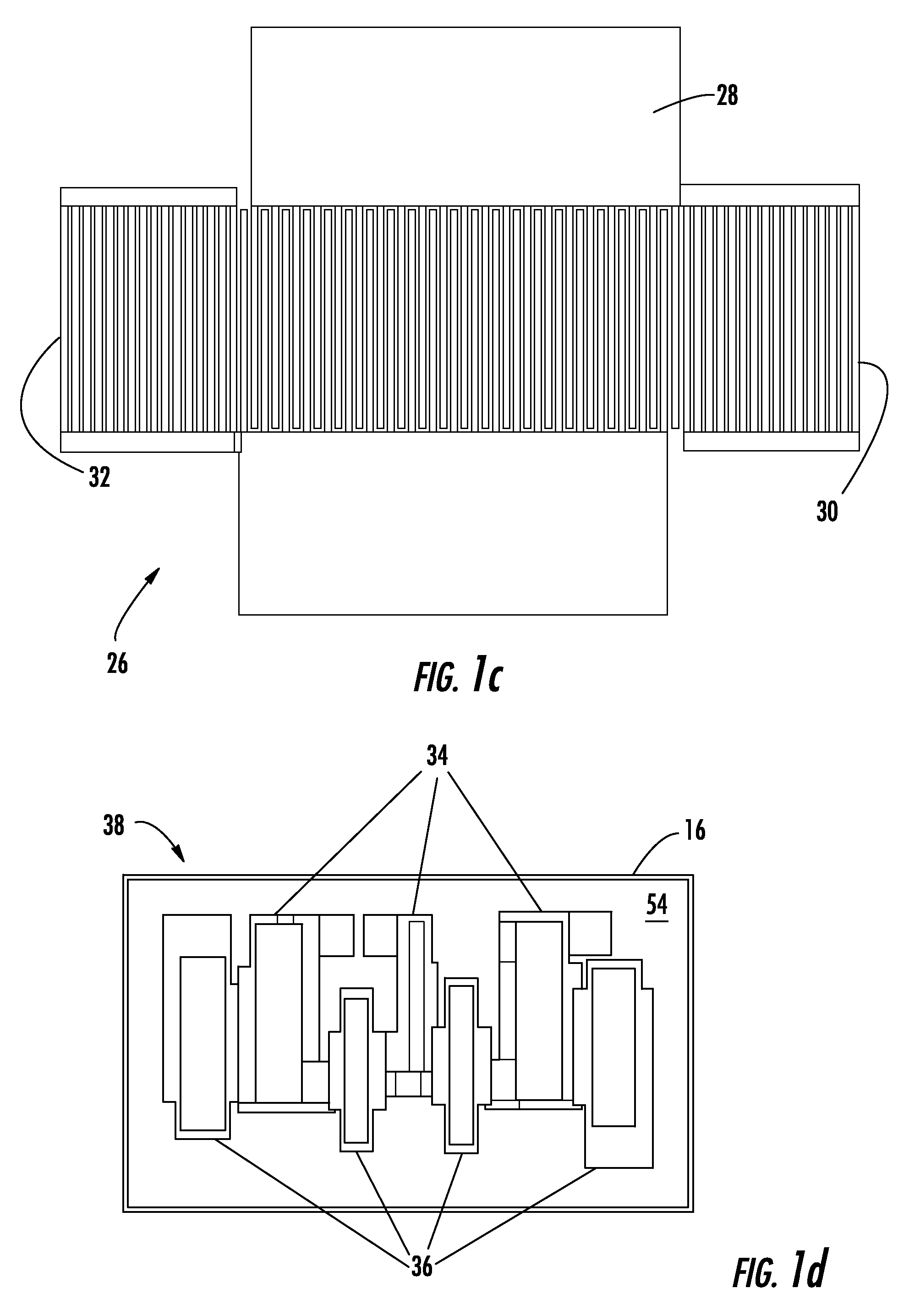Method of forming a surface acoustic wave (SAW) filter device
a surface acoustic wave and filter device technology, applied in the direction of conductive pattern formation, generator/motor, waveguide, etc., can solve the problems of poor electromechanical coupling, high temperature drift, and prevent the use of saw devices, and achieve the effect of facilitating thermal diffusion
- Summary
- Abstract
- Description
- Claims
- Application Information
AI Technical Summary
Benefits of technology
Problems solved by technology
Method used
Image
Examples
Embodiment Construction
[0019]The present invention will now be described more fully with reference to the accompanying drawings in which various embodiments of the invention are shown and described. It is to be understood that the invention may be embodied in many different forms and should not be construed as limited to the illustrated embodiments set forth herein. Rather, these embodiments are provided so that this disclosure will be thorough and complete, and will convey the scope of the invention to those skilled in the art. Like numbers refer to like elements.
[0020]One embodiment of the present invention, a SAW filter 10 illustrated with reference to FIG. 1 includes electrode patterns 12, 14 deposited on a piezoelectric substrate 16, which substrate is bonded to a surrogate substrate 18 through a bonding layer 20 of a Silicon oxide material (SiOx). FIG. 1b illustrates a cross section of the composite device of FIG. 1. The electrode patterns 12, 14 form transducers 22, 24 that may be composed of inter...
PUM
 Login to View More
Login to View More Abstract
Description
Claims
Application Information
 Login to View More
Login to View More - R&D
- Intellectual Property
- Life Sciences
- Materials
- Tech Scout
- Unparalleled Data Quality
- Higher Quality Content
- 60% Fewer Hallucinations
Browse by: Latest US Patents, China's latest patents, Technical Efficacy Thesaurus, Application Domain, Technology Topic, Popular Technical Reports.
© 2025 PatSnap. All rights reserved.Legal|Privacy policy|Modern Slavery Act Transparency Statement|Sitemap|About US| Contact US: help@patsnap.com



